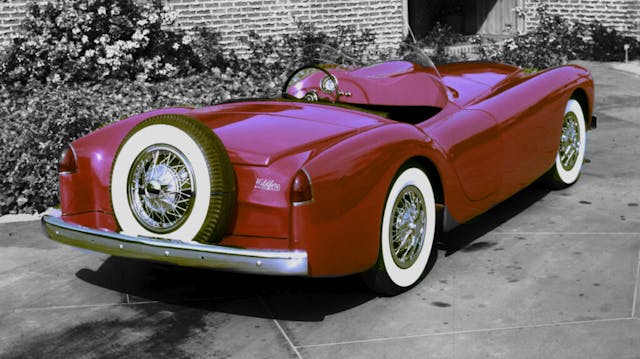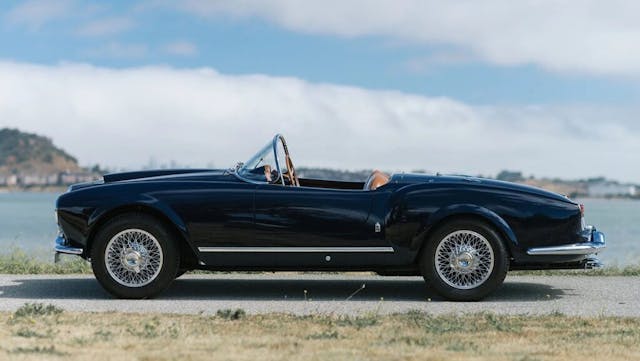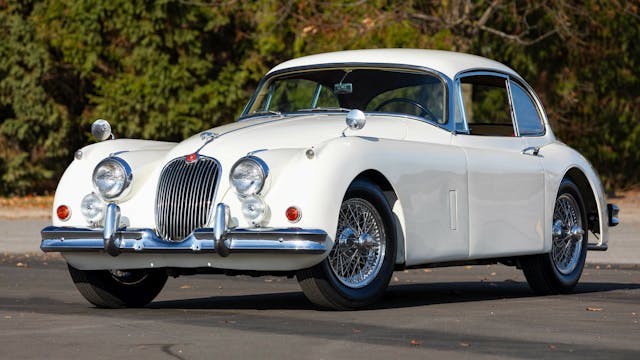5 classics that just got more affordable
The Hagerty Price Guide is updated quarterly, and the methodology takes into account many factors, from auctions to private sales. For a better understanding of how we put it all together, check out this article.
At the close of 2023, you don’t need to be a statistician or religious market-watcher to see that conditions are different compared to a year ago. Our recent update of the Hagerty Price Guide brings that into clear focus. A year ago, we were in the kind of seller’s market not seen since before the Great Recession, with record prices regularly reset and drastic month-over-month appreciation. The similarities with 2008 mostly end there, though. The financial crisis 15 years ago hit the collector car market noticeably, but after a peak of the seller’s market in 2022, the market for collector cars has seen a more gradual and softer slowdown in 2023.
As buyers become more discerning with their purchases and sellers come to grips with their cars no longer bringing a premium for merely existing, the best way to describe what’s happening is air being let out of the bubble. And some sanity coming back to the market is a good thing. Prices are still high for the most part, while some enjoyable cars are trending towards becoming more accessible to the average enthusiast. Speaking of which, here are five of the most significant movers from our latest price guide update that are a lot more accessible (aka affordable) than they were at the beginning of the summer.
1956–75 Volkswagen Karmann Ghia: -16%

Following the success of the Beetle, Volkswagen introduced its new, upscale Type 14 Karmann Ghia for the 1955 model year. The new sporty-looking VW was a collaboration between Volkswagen, who sold the car and provided the underpinnings; Italian firm Carrozzeria Ghia, who designed the bodywork; and German coachbuilder Karmann, who put the car together. Hence the name Volkswagen Karmann Ghia. Over its nearly 20-year production run, the Karmann Ghia saw few major changes and today the biggest determining factor in price is whether or not the roof goes down.
Over the past few years, both the Karmann Ghia and Beetle have experienced astronomical gains in value. These were truly cheap cars in the not-so-distant past, but particularly since 2019 they have stretched well beyond the point of “affordable” or “entry-level” for many enthusiasts on the hunt for cheap air-cooled fun. The 16 percent decrease with this update, led by convertibles, was a notable reversal. After such a rapid climb previously, it’s reasonable to assume that buyers have reached the limit of what they are willing to spend and prices are sliding as a result. Further observation will be needed to call this a trend, however.
1952–56 Woodill Wildfire: -25%

An obscure car even to many car nerds, the Woodill Wildfire is one of those fabulous pieces of forgotten fiberglass to come out of a sports car–crazy 1950s America. After the postwar explosion of independent manufacturers building their own small-batch sports cars, the 1953 Corvette was just one of many fiberglass two-seaters available, and the Vette was actually a bit late to the party. The Wildfire debuted in 1952, and was primarily sold as a kit, although a few were sold as complete cars. Only about 300 Wildfires were ever sold.

For a long time, these have been six-figure cars when in perfect condition. Not bad for an obscure plastic-bodied car, right? Recently, though, one was offered publicly and sold for $31,500, well below its price guide value. Yes, yes, “one sale doesn’t set the market.” We say that all the time, but hear me out.
When a car is so uncommon that only one example pops up every few years, each sale requires close examination. So yes, prices fell, but not nearly as hard as that sale might have suggested they should. What do we do next? Basically, wait for another to come up to give us the opportunity to check the market again, and keep an eye out for any other equally obscure fiberglass cars from the 1950s whose sales might provide a clue.
1972–76 Ford Thunderbird: -15%

Here’s a car we almost never talk about: the sixth-generation Ford Thunderbird. As the 1970s wore on, horsepower numbers in America plunged while the cars themselves got bigger and heavier, and Thunderbirds were no exception. Built on a shared platform with the Continental Mark IV, T-Birds got straight-up huge. With a big ol’ 460-cubic-inch engine making (just barely) over 200 hp, these were not the pinnacle of speed. But speed was never the point of this personal luxury coupe, and more sheetmetal meant more style in the ’70s.
To put the T-Bird’s 15 percent drop into context, these have never been expensive cars, and the median #2 (Excellent) value is just $18,000. 1970s luxury cars have never been the darling of the collector car hobby. With the exception of certain Corvettes and a few other sportier cars, domestics of this era are typically very affordable. The 1972–76 Thunderbird did see sizable growth during 2020 and 2021, but everything has a ceiling, even if it’s a low one. T-Birds in #2 condition peaked just over 22 grand this summer, but both confirmed sales and most listings are lower in recent months, suggesting the transition to a buyer’s market.
A 15 percent drop on a relatively inexpensive car is not a lot dollar-wise, but in this case it’s still worth keeping an eye on. Whether this is a leading indicator that mid-’70s American luxury barges are cooling or just a small blip on the radar, time will tell: We may need a few more updates of the price guide to fully suss out.
1956–59 Lancia Aurelia B24 Convertible: -12%

While Lancia did amazing things in the rally world during the 1970s–90s, it screwed together some fantastic cars during the 1950s and ’60s as well. Case in point: the Aurelia. Both beautiful and innovative, it used a V-6 engine, incorporated a transaxle for improved balance and weight distribution, and even rode on radial tires, all of which was very advanced stuff in the 1950s.
Since Aurelias came in several specs and body styles, their prices range widely, with the special-bodied Spider America selling for over $1M in clean condition. In the latter part of the summer, Coupes and Spiders slid a bit in value, but the Convertible saw the most downward movement. We observed several offerings at Monterey in August, all of which failed to meet expectations. But while the slide of this lesser-known Italian car may not be newsworthy, we observed a softening market for a lot of the high-end Italian sports car market from this era post-Monterey.
1957–61 Jaguar XK150 -13%

Jaguar’s famous XK-series of postwar sports cars ended with the XK150, which debuted in 1957 and was eventually succeeded by the E-Type in 1961. Stylistically, the XK150 was an evolution of the XK120 and XK140 with a slightly more streamlined body, one-piece windshield, and interior improvements like a leather-wrapped dash. Mechanically, the most significant upgrade was the availability of a larger, 3.8-liter engine and disc brakes.
Of the XK150s we track, Drophead Coupes (Convertibles to us Americans) and Roadsters saw the most movement. As with many cars at this price point, much of the auction data we had to work with this past period came out of the Monterey sales. While no concours-grade cars were tracked at the sales, a number of good-condition cars came to market, with all of them selling for lower than expected prices, which suggests that the market for these cars is truly softening.
***
Check out the Hagerty Media homepage so you don’t miss a single story, or better yet, bookmark it. To get our best stories delivered right to your inbox, subscribe to our newsletters.



Some mildly interesting choices but the Thunderbird is big boring yawn to me.
Who really wants any of the cars listed anyways.
But we’re still waiting….to hear why every old car is called a “classic.” There’s this wonderful tome known as a dictionary. It might be enlightening to consult same as to classic, vintage, memorable, old, Edwardian.
Meanwhile, what’s wrong with old? Or special interest? Or collectible? Or used? Or the ever popular pretension of “previously owned?”
P l e a s e, let’s restrict the term classic so it retains worth. Calling everything out of the Kelley Blue Book “classic” does not increase its worth. Lazy prose.
BTW, nothing wrong with old cars that are not “classic.” Louis Armstrong, George Gershwin, Benny Goodman, Artie Shaw, John Coltrane, the Beatles not classical music, but will ensure as long as Vivaldi, Chopin, Brahms, Maurice Ravel. Comprende?
Not complicated. Really.
“Louis Armstrong, George Gershwin, Benny Goodman, Artie Shaw, John Coltrane, the Beatles not classical music, but will ensure as long as Vivaldi, Chopin, Brahms, Maurice Ravel.”
They are not classical music, no, but they are classic music. Hell, most radio stations call cheesy hair metal music “classic rock.” Do you take umbrage with that? Just curious.
So the word “classic” when used to describe a vehicle should be used with extreme prejudice according to you. Can you share the comprehensive list of vehicles that can be considered classic? How often will you update it? What are your deciding factors? It’s a word that has more connotation than definition in the car world at this point. Attempts to restrict it’s use are futile as trying to get people to stop calling any sandwich that combines sliced steak, cheese, and a bun a Philly Cheesesteak. Sure, people are pretty passionate about the things that do and do not qualify for that definition, but also recognize in the grand scheme it truly does not matter.
Have a dictionary? There’s your answer.
How can everything be “classic?”
We’re going to let the marketing guys at some radio stations revise Webster’s and the Oxford Unabridged?
Meanwhile, if “classic” is of so little consequence, why do you need to use it instead of one of the dozen other terms we might use for various cars?
Meant, above, last line, “….but will endure as long as…”
Seriously, what’s with this “classic” mantra?
I’m only aware or the Woodill (no ‘h’) because I saw one for sale in Hot Rod Magazine in the late 1960’s. I wouldn’t hold my breath waiting for the next sale. That Aurelia convertible is gorgeous and I would never say never to an XK of any vintage. What else was on the list?
I agree with most of the comments, these cars are all losers and I would not even bother to mention them, the guy with the Rivera has a point, I had a 71 Boat tail 455 cu in. Great car that would look good beside most of the junk they make today, also I had a 1989 Allante, they only made 21000 of them over a few years but they are not collectible or worth very much, could never figure that one out, Corvettes will always rule.
I think the Allante looks like a contrived version of a Cimmaron… without a top.
Survey says, not ever a classic.
I personally love the cars from the 1970s. Big, luxo barges with wimpy power. Who cares? Power isn’t why I like the cars. My 1st car was a 1976 Lincoln Mark IV (in 1985). Loved it. I am only interested in cars from the 60s, 70s, 80s. I suppose it is a generational thing. My grandad was a 40s and 50s car guy. It’s sad to think the newest generation won’t give a damn about collectibles (most aren’t even interested in getting a driver’s license from what I’ve seen). It’ll be a sad day when all the real car guys age out and die off.
I know I commented on the irrelevance of this article the last time you ran it. The Woodill Wildfire??? Who really knows of or cares about a Woodill Wildfire? And I know I made some derisive comments about the T-Bird that’s on a Lincoln platform. Yuk! Anyway, I know I commented that deadline is a cruel taskmaster but why did you run this article twice this month……so far? And I also know that I said something nice about the Karmann Ghia and the XK150 Jag. Otherwise, refugees from the wrecking yard.
So, are we unable to address this matter of calling everything on four wheels out of the Kelley Blue Book “classic?” Might we park the discussions on individual cars for a few moments and focus?
I just broke into a fit of wine-fueled laughter, just looking at that T-bird. Now, picture it in motion with sorry FoMoCo shock absorbers as it swallows over roadway undulations…..Walloon, walloon.
Guffaw.
While I liked the XK-150s, nobody has ever beat the swoop of the X-120 fixed head coupe C-pillar…even the E-type.
Russell, please don’t even whisper about “real car guys” aging out and dying off. I just spent a ton of $ restomodding a ’67 Mustang GT Fastback. So the thought that when my wife pries my cold, dead hands off the steering wheel and has to sell it that it will have plunged in value is disturbing. The good news is that when I drove it the first weekend, it was not just boomers that followed me into parking lots to see the car up close and look at the Coyote under the hood. Lets hope the really cool cars of any generation are always appreciated. And a girl who was two years older than me in high school drove a red Karmann Gia Convertible. She was way high on the hotness scale, so when she’d pick me up with top down and cruise the streets of my hometown, it meant a lot of jealous glances from my friends. Needless to say, if the right Karmann Gia showed up for sale, I’d have to install a second lift in my garage. My wife knows I had a ’67 Mustang Coupe 50 years ago, but I might have a more difficult time explaining the desire for a Karmann Ghia.
how about my 78 silver anniversary vette? 90k rebuilt engine, 1-82 all # match, original paint, new air, ice cold, new glass, 500 miles on professional rebuilt engine, added 80 more horses,total rebuilt front to back, why is this only worth 25k on a good day?
I purchased my 1967 cougar new from the dealership that same year. Due to my age, it’s time to let her go and let someone else have the enjoyment that I had with it over the years. Interested parties can contact me for more information.
Buy what you like in the best condition that your can get/afford. Who cares if it is a four door six cylinder grocery getter or a less popular model from the 70’s. Who cares what the market is doing. We can do without all these ‘investors’ that are jacking up prices and we can also do without all these ‘restorers’ that are putting lipstick on pigs to cheat people who aren’t all that car savvy to be able to look at everything with a critical eye. People fall in love with a car and want it, but end up burned by poor workmanship.
I view this site for a look of the past, notas an improbable purchase to bringmy youthback. . I value getting old looking back at the times I went through a Kmart or A&P parking lot and viewed these family cars NEW! I rode in and drove these now classic and collectable muscle cars! We never considered them classic while broken down on the side of the road or covering up rust holes to pass state inspection. Rarely did the doors close correctly or windows not leak. There was a good reason for junkyards, 100,000 miles and the car was done!
Enjoy the pictures and ride on!